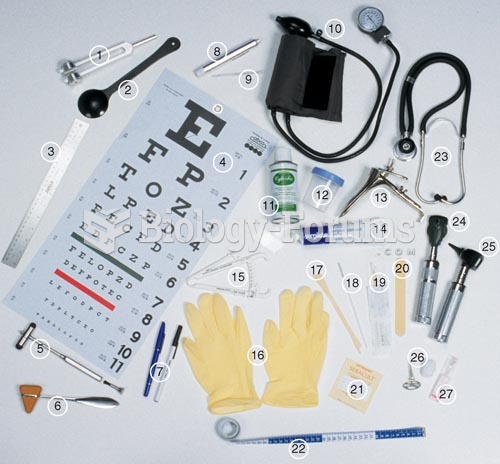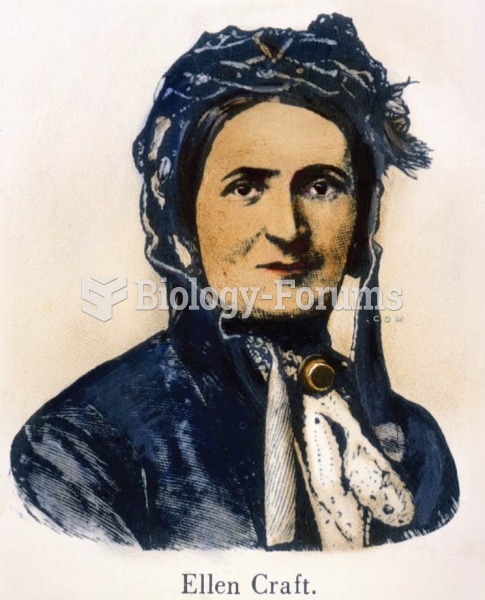|
|
|
Nearly 31 million adults in America have a total cholesterol level that is more than 240 mg per dL.
The B-complex vitamins and vitamin C are not stored in the body and must be replaced each day.
This year, an estimated 1.4 million Americans will have a new or recurrent heart attack.
Coca-Cola originally used coca leaves and caffeine from the African kola nut. It was advertised as a therapeutic agent and "pickerupper." Eventually, its formulation was changed, and the coca leaves were removed because of the effects of regulation on cocaine-related products.
Fatal fungal infections may be able to resist newer antifungal drugs. Globally, fungal infections are often fatal due to the lack of access to multiple antifungals, which may be required to be utilized in combination. Single antifungals may not be enough to stop a fungal infection from causing the death of a patient.
 Testing Visual Fields by Confrontation: The nurse and patient should be approximately at an eye to e
Testing Visual Fields by Confrontation: The nurse and patient should be approximately at an eye to e
 Audiometry exam being administered to a young child who is wearing the ear phones through which soun
Audiometry exam being administered to a young child who is wearing the ear phones through which soun





